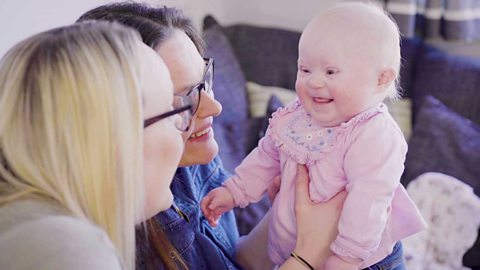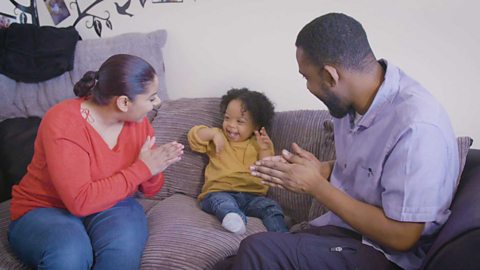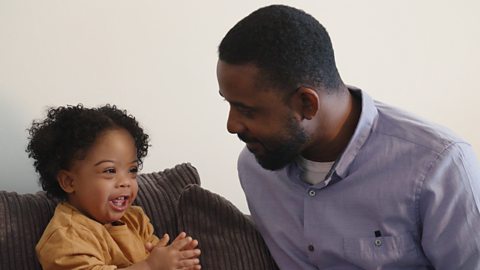Around 1 in 14 children are affected by Developmental Language Disorder (DLD). But many of us donât know anything about it.
Louisa Reeves from Speech and Language UK says, âItâs quite common and because it can look like other things - including autism or dyslexia - itâs often missed.â We chatted to Louisa to find out what DLD is, the signs your child might have the condition and how you can help them.
What is DLD?
People with Developmental Language Disorder have difficulty talking and understanding language. If your child has DLD, they might mix words up in a sentence or misunderstand what youâre asking them to do. A lifelong condition, itâs often called a âhidden disabilityâ because itâs not always obvious that someone has DLD. Louisa says, âDLD is very common and tends to cause problems understanding words and longer sentences. For example, if you ask your child to ârun upstairs, get their shoes and pick up their jumper on the landingâ, they might get their shoes, but they wouldnât necessarily get the rest of the sentence.â
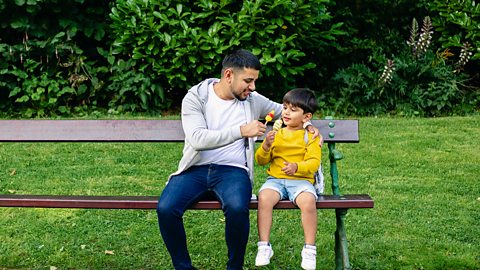
What causes DLD?
No one really knows, but itâs often spotted when children start school. It can be mild or severe and Louisa adds, âThereâs no one single cause. Itâs probably a number of factors and it can run in the family. If you have any late talkers in the family or other family members that have had language difficulties, that may be something to look out for.â
What are the signs of DLD in children?
Some signs of DLD in children:
Your child struggles to find the words to say what they want
They mix their words up in a sentence
They have a limited vocabulary
They donât understand what youâre asking them to do, or find it hard following instructions
Theyâre not able to say how they feel, or to express themselves
They find it hard to tell a story and put things into a sequence of events
They donât have the names for things: a red ball becomes 'that one' for example
Older children might have difficulties reading
They struggle with the idea of past, present and future
They donât use proper grammar: 'I run' becomes 'I runned'
They get upset when routines change
They find it hard to make, and keep, friends
You find yourself having to 'translate' what your child is saying for other people
Louisa adds, âThese are just some of the signs to look out for. If youâre worried about your childâs speech and language, help is out there.â Speech and Language UK has a with some simple yes/no questions to help gauge where your child is at with their communication and with knowing whether to seek further help. If you have concerns you can have a if any issues are flagged up.

What age do children get DLD?
As there is no known cause of DLD, itâs hard to say when it develops. It could be that children are born with DLD, while the different ways their brains develop as they grow may also play a part. In any case, it might take a while to spot if your child has it. âChildren can be good at finding ways to copeâ, says Louisa. âAs adults, we do a lot of hand gestures and follow routines that give clues to meaning. A child knows itâs dinner time as the cutlery is on the table, or that itâs time to go out because youâre holding their coat. If they have DLD, they can get very upset by any change to their routine because theyâve not understood what is expected of them or what is happening. And this is why DLD is so hard to spot - other conditions can leave children feeling upset by change too.â
When is DLD usually spotted?
DLD is not usually diagnosed in children under 5. Itâs more likely to become obvious when they start school and when language gets more sophisticated. And sometimes it does not become clear until secondary school, as children come to hear four times as much language as they do in primary. Louisa adds, âSometimes children can cope in primary school but it's when the language demands increase significantly at secondary school that their challenges become much more apparent."
Frustration at not being able to get their message across could be another sign. âA 2-year-old will go through a period where what they want to say outstrips their ability to say things. Thatâs totally normal, but if that carries on and your 3-year-old is still struggling to say what they want, or other adults are struggling to understand them, it could be an early sign of DLD.â
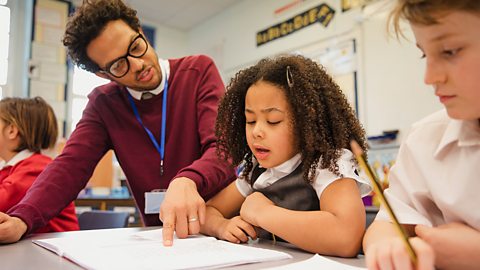
How do you get a DLD diagnosis?
Your child will be diagnosed by a speech and language therapist. Youâd need to see your GP or health visitor and ask for a referral. You can get free speech and language therapy for children on the NHS and your local NHS website will have information on how to get referred. âThere is no one single test for DLD, instead itâs more of a developmental assessment over timeâ, explains Louisa. âYouâll have a number of appointments where the therapist will ask different questions to assess your child.â
When should I get expert help?
If youâre worried, talk to their teacher or key person to see if they are noticing any issues with talking or understanding words.âParents will know if a child is really strugglingâ, says Louisa. âIf you read a story with them, can they tell it back to you and does it make sense? Are they using the words youâve used, and are they picking up on new words at nursery or school?â
What is the difference between DLD and dyslexia?
Because DLD can mean children have difficulties reading, it can be confused with dyslexia once children begin learning to read. But theyâre very different. DLD means your child might struggle to understand what is happening in the story and what the words mean. Dyslexia means your child might struggle to read the actual words.
Louisa says, âDLD can look like other things, meaning parents and teachers might feel children are a little behind their peers or lacking in confidence. It can then be disguised as a reading problem. If they are struggling to answer basic questions about the story, itâs more likely they are struggling with language rather than reading.â

How can I help my child if they have DLD?
1. Get their attention
Say your childâs name first to make sure they are listening before you give any instructions or ask them a question.
2. Use simple sentences
Help your child understand by using simple words. Children with DLD can struggle with negatives: if your child is told, 'donât run' they might miss the &#łæ27;ČÔât&#łæ27; part of the word. Try saying âwalkâ instead.
3. Use gestures
Anything that supports your child to understand what youâre saying to them will help. Talk and use gestures at the same time.
4. Give one instruction at a time
Stick to one idea at a time. This will help your child understand what youâre asking them to do.
5. Check theyâve understood
Ask them to repeat back what youâve said to them or asked them to do.
6. Use new words
Model language to your child by using new vocabulary. If they say, 'my wellies', you could reply, 'your blue wellies.'
7. Play language games
Help with the idea of past and future with this teddy game or practise retelling stories together. There are lots more activities to try here.

